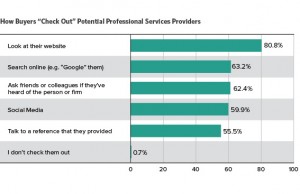
Ecommerce solutions have come a long way in just a few years. A lot of brick-and-mortar businesses have already tried to go online with limited results. If your last website was built in 1998, 2005 or even in 2011, the odds are high that you are using a solution that does less, costs more and takes more maintenance than some of the newer solutions.
New tools offer polished branding and more engaging customer experiences. Inventory management has become easier and detailed reporting helps business owners make well-informed decisions. Businesses are tracking their customers while saving time and getting better insights into their business. Most importantly, success no longer requires technical expertise with platforms dedicated to ease-of-use and service.
There is no perfect-for-everyone solution, so make sure you are thinking about what makes your business unique. There are many new industry-standard features that can help almost any business.
Built for Sales
Your business exists to make money. Your ecommerce site exists to generate sales. Almost any website can accept credit cards, but that does not make it an ecommerce store. One of the biggest differences between a website and an ecommerce platform is that an ecommerce platform is built for sales every step of the way.
The engineers and designers working behind the scenes at ecommerce platform companies spend years thinking about the way that your customers navigate through pages, the various design themes you can choose from, the focus on images and descriptions and the one-page checkout experience. Every step is made to say, “I am valuable, interesting and trustworthy.” The best even have extra tools.
Just getting on a platform built with that philosophy can boost your conversion rate instantly.
Easy-to-Use, High Quality Branding
Before online customers consider paying for anything, they are going to see your site’s design. Its look and feel will affect their opinions whether they want it to or not.
Professional design shops can cost thousands of dollars. They are great for taking your image to the next level, but new ecommerce solutions give business owners access to slick, professional site design with free or low-cost templates that you can install with no technical expertise. With hundreds of templates to choose from, businesses can find a look that matches the personality of the shop.
Also, having a mobile friendly site is more important than ever. Customers want to look at your site while on-the-go or while standing in your brick-and-mortar shop. Mobile use is so common that Google factors it in when deciding how high to rank your site. If your site isn’t mobile-friendly, you will slide lower on Google rankings, making it harder for customers to find you.
Integrated Inventory Tracking
For a business selling in multiple places, integration is key. If you use the wrong tools, it could be like running two businesses at the same time. You’ll be managing two different inventories, managing different sales lists and accidentally selling items you don’t have in stock anymore. That mistake creates negative customer experiences and wastes everyone’s time.
New integrated tools allow you to automatically sync up your product details and stock levels. Customers will be able to see what’s in stock, when it’s in stock –– without you paying attention every second of the day.
Remote Access & Reporting
SaaS systems offer incredible freedom to business owners. Remote access means that as a business owner or manager, you can login to your management system from anywhere and see how your business is performing, identify inventory issues, help resolve mistake or just track sales performance. You are free to get things done wherever you are and not be tethered to any one location. Check out this ROI calculator for on-premise versus SaaS solutions to get an idea of your cost savings, too.
Better yet, get an advanced reporting system that will let you closely track how your products are performing. You can make quick adjustments to inventory or prices to get the most out of your product line. Maybe your best selling online products are different from your best in-store products.
Customer Tracking & Loyalty
The best ecommerce and in-store tools will help you gather detailed information about your customers. The most basic tool is collecting contact information. Those details will help you create long lasting relationships and grow your customer base. But, even more than that, you will be able to see how your best and worst customers behave, identify patterns and test new promotions or behaviors to start creating more loyal customers and drive more referrals.
Don’t forget about content, either. Let your customers write content for you by posting reviews of your products right on the site itself. This strategy is one of the easiest ways to build trust.
Unified Accounting
Having multiple systems never gets more complicated than during tax season. If you can find a system that will automatically update your sales and accounting information into one place, you will save hours of frustration. You may also save hundreds or even thousands of dollars in accounting fees.
The Right Growth Patterns for Your Business
Make a one-, five-, and ten-year plan. There are a lot of different strategies that successful businesses use to expand online. It may be overwhelming to take all of them in at once. And, something that worked for someone else may not be the best fit for your particular business.
What makes your business unique? What are some key strengths?
Below are some examples of common growth opportunities that will be relevant to some businesses, but not to others. If any of them sound familiar, be sure to think about how your software solutions will help or hinder your growth down the road.
Trade Shows & Pop-up Shops
There are often opportunities in your area to reach new local customers without committing too much extra investment. Do your products travel well? Are there tourist events in the area? You may consider hiring an employee to represent your business at a temporary location. If you do, try to find an integrated POS system that can go mobile and stay connected to your website.
Changing Your “Home Base”
Will the way you do business change in the next five years? When selecting your next software solution, you will probably be thinking about one system as more important and the others as less important. Maybe you are 95% in-store and you don’t really care about your online solution right now, so anything will do as long as it works with your in-store solution.
We have seen this equation change when folks don’t expect it. An online side project becomes a fully grown ecommerce success story, taking over 50% or more of the business’s revenue. You don’t need to make huge sacrifices, but make sure you consider the whole platform and potential future success. If you can, find a platform with lots of growth options through partners and integrations.
Opening a Second Location or Warehouse
If you are storing all your products in one place now, will that always be the case? Maybe in a few years a second retail location will become available. Maybe your website will be so successful that you start storing separate ecommerce inventory in a warehouse. Some platforms can manage multiple locations much easier than others.
Selling to Different Audiences Online
As you learn more about your online customers, you may realize that there are a couple of different audiences you want to speak to at once. This will be especially true for businesses that combine retail and wholesale. Will you need a second website? Can your website segment your customers with different content and prices?
The above copy is a chapter from a free Bigcommerce eBook. For more information and advice on how to bring your brick-and-mortar online, download the book: 5 Steps to Scaling Your Brick-and-Mortar.
Digital & Social Articles on Business 2 Community(95)
Report Post







